You probably realize that I have been somewhat trying to avoid doing a review on Audio-Gd gears. The story goes like this. One or two years ago a few people on our local forum bought the Audio-Gd Compass when it was just released. When we went to listen to it, we were all puzzled on how bad the thing sounded. I even had it compared to a generic Pioneer DVD player at that time and found that the DVD player played better music than the Compass. On another instance a bunch of DIYers bought the Audio-Gd discrete op-amps and found that none of the op-amps were good enough to replace the regular chip op-amps. After that, no body seemed to want to buy another Audio-Gd product, no matter how long the appreciation thread in Head-Fi runs.
In the mean time, Audio-Gd continued to make new products and every product seem to have a hundred page long thread in Head-Fi. We were all just happily ignoring all those products, but my friend Yobi can’t seem to hold on to his curiosity and ordered a mid-line Audio-Gd DAC. I think it was the NFB-8 with the dual WM-8471 Wolfsons. After talking with me, I I told him to go with the PCM-1704 based stuff if he truly wants something high-end (I didn’t even know what models in Audio-Gd’s line up carries the PCM1704 chip). When he told me that he had cancelled the order for the NFB-8 and ordered the Ref7.1, I did a quick google and found out that the Ref7.1 is the top of the line model. Sweet.
But we all remembered how bad the Compass was from the early days and so we crossed our fingers.
I think two months passed before Yobi told me that the Ref7.1 is now in his possession. He liked the sound, but was in no way to make any evaluation since he has limited experiences with DACs in general. At that time I begin to think of some DACs that would be readily available and can be compared to the Ref7.1. I know that another friend of mine, Rudi, owns the Bryston BDA-1, a $2,000 DAC with dual Crystal CS-4398 DAC chips that have been getting very good reviews. For instance, check this one out from Computer Audiophile:
The Bryston BDA-1 external DAC is an incredible bargain at only $1995. The sound quality, build quality, and feature set are equal to or better than other DACs I’ve heard at twice the price. That’s not a review cliche, that’s the honest truth. In private conversations during the review period I described this DAC as a giant-killer. I stand by those words and advise many DAC manufacturers to steer clear of a DAC shootout with the BDA-1. If I didn’t own my beloved Alpha DAC I would have purchased the review sample in a heartbeat, and saved $3000!
I didn’t have that many friends who owned $2,000 DACs, and so I tried to come up with an alternative. Donny who is a good friend just finished building a battery powered PCM1704 based DAC. Battery powered is the keyword here, as it should offer a clean and steady power supply that other AC-powered DAC would not get.
Another DAC that I thought of was the Buffalo 32 DAC which I had listened to a few months back but left very unimpressed (it largely mimic my impression of the Buffalo 24). The owner, Drew had installed a new, vacuum tube based, analog section and it is time to give the Buffalo another listen.
Let’s now start with the Bryston.
VERSUS THE BRYSTON BDA-1
When I first received the Bryston BDA-1, I compared it briefly to the CEC TL51XZ Belt-Driven CD Player that I’ve been using as my reference all along. The difference wasn’t subtle, and the Bryston totally trumped my CEC with its clean and grain free, much more open and spacious soundstage, and far better instrument definition. So I was feeling very positive about the Bryston at that time.
Then the Ref7.1 arrived, and while it was quite spectacular, I was not entirely blown away with it at first. It clearly had a different sound from the Bryston, and being a typical PCM1704 sound, it was darker, more spacious and deeper soundstage, with better micro details and ambiance. The bass was far weightier in the Ref7.1 to the point that it almost sounded like a bass-boost switch was on, but again PCM1704s have always had a significantly heavier bass when compared to other DACs. Two things that I didn’t like was that the midrange is not as full and as smooth as on the Bryston, and that the treble is thin and dry, again when compared to the Bryston. While the deep and spacious soundstage really impressed me, overall sound from the Ref7.1 was also dryer and rougher than the Bryston. So my initial impression was more of “wider soundstage, but ultimately a different DACs with a different sound”.
I got intrigued by the dry sound and so I asked Yobi, who owned the Ref7.1 on how long he’s used the Ref7.1 for. He said roughly 50 hours, and I remembered seeing a picture of the Ref7.1 internal and noticed that it had a LOT of caps inside. And so I thought, I’ll let it run for a while and see if the sound changes. It was a moderate amount of burn-in, perhaps 24 to 36 hours, and when I had another listen, the sound had smoothens out considerably. I took another A-B test to the Bryston, and the difference is not even close this time. It’s like the Ref7.1 had evolved to be a DAC twice the price of the Bryston. Over the next few days I continued to spend time with the Ref7.1 and the difference in technicalities made me not want to go back to the Bryston anymore. The Bryston was still a grand sounding DAC worthy of being a reference. But things were just bigger and more spacious in the Ref7.1, and to me that’s really the deal breaker with the Bryston.
Of course the difference in the tonal balance that I observed earlier is still there. Mids are still fuller with the Bryston and the sound also warmer out of the Bryston (though not overly warm), while the Ref7.1 is thinner on the mids. The Ref7.1 had the signature dark sound of the PCM1704 (if you’ve listened to the Hifiman HM-801 then the Ref7.1 is like a super-and-turbo-charged HM-801). Vocals are fuller and more forward with the Bryston, and so if you happen to listen to a lot of vocals and are a midrange lover, then I would steer you toward the Bryston and not the Ref7.1. The Bryston had this sweet and full midrange while still giving a lot of texture and detail. It’s definitely a better vocal DAC than the Ref7.1.
I just love how instruments have better definition and decays are more real without being unnaturally long on the Ref7.1. Since the majority of music that I listen to tend to be live recordings (or open mic-ed recordings), the Ref7.1 really put me there in the venue. With the Sennheiser HD800 headphone, the soundstage size, three dimensionality, and dimension is the best I’ve heard out of any headphone system. Especially now that I’ve gotten the Apex Peak amp.
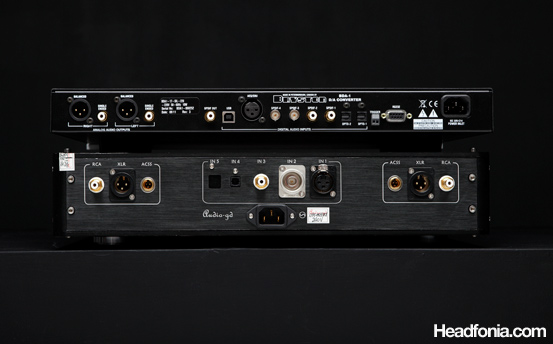
I very much prefer the abundance of inputs that I get on the Bryston. The Ref-7.1 on the other hand is more minimalistic, and this one doesn’t come with the USB input option either. Both DACs support unbalanced and balanced outputs, with the Ref7.1 supporting Audio-Gd’s ACSS terminal.
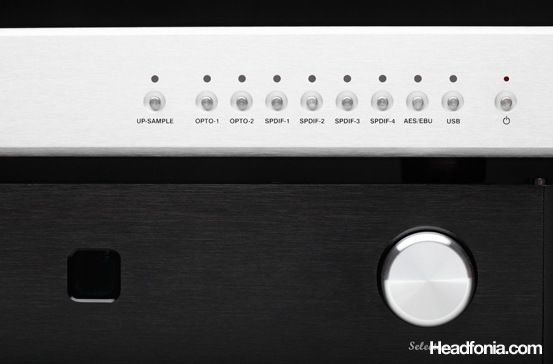
Individual button for each inputs, up-sampling button, and power switch on the Bryston is a very nice feature. The button’s tactile feel is also first class.
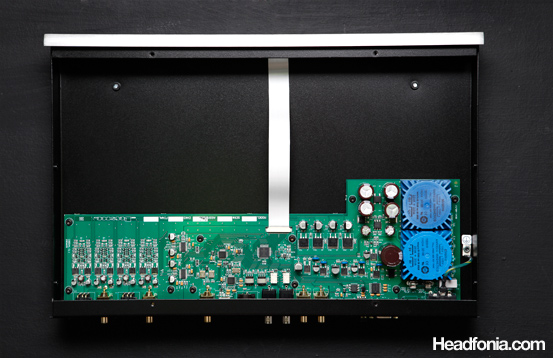
In a way, I find it amazing that the Bryston was able to give that kind of a performance given the very minimal circuitry and SMD parts. It’s like comparing a Lotus Elise with a Lamborghini Gallardo. The Bryston wins on simplicity where the Audio-Gd more on “brute force” of the eight PCM1704UK chips..
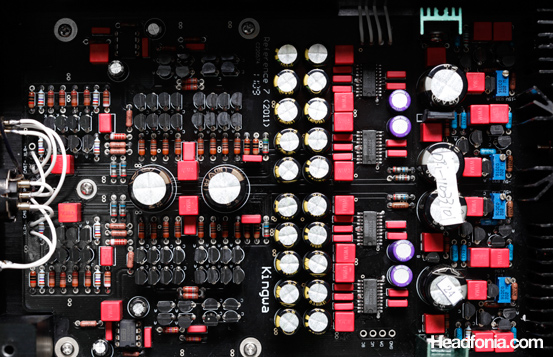
The left area is the analog out (you can see the connectors on the left panel), on the right side is the DAC section (you can see the four PCM1704UK chips — this is a shot for one channel of the DAC). The use of through the hole parts should give better sound quality over SMD parts.
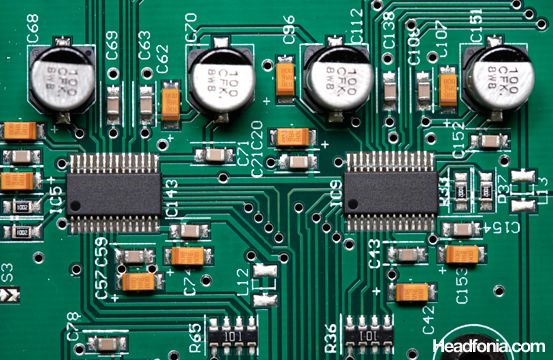
The Bryston only uses two Cirrus Logic CS-4398 chips. One per channel. Notice also the use of SMD parts, and the much cleaner soldering job in the Bryston.

Analog section of the Bryston. Much simpler with SMD parts. Though the Bryston ultimately loses the technical battle, I was actually quite amazed in how they were able to give that sort of a performance given the much simpler design and SMD parts.
VERSUS THE BATTERY POWERED PCM1704 ELEKTOR DAC
One day Donny stopped by with his battery powered PCM1704 Elektor DAC and he wanted to check out the Ref7.1. The design of the DAC is from an article that was published in the Elektor magazine in 2000. His PCM1704 uses SLA batteries as the power supply, and being a DIY build with the usual count of boutique parts, I think it would be interesting to see how things stand. The big deal was of course, the battery power supply, as batteries are known to be one of the best power supply around. Well, it was a really good sounding DAC with precisely the same tonality as the Ref7.1, as both are based on the same PCM1704. But the technicalities aren’t even close. It makes for a good step up from the Hifiman HM-801 player — if you’re into the PCM1704 sound, and sort of a good mid-line between the performance of the HM-801 to the Ref 7.1.
VERSUS THE TUBE BUFFALO 32 DAC
I’ve listened to three different Buffalo DACs so far. The first one was a Buffalo 24. The next Buffalo was the Buffalo 32 with Twisted Pear’s IVY II analog stage. And finally, the third one is the Buffalo 32 with a vacuum tube analog stage that I’ll be comparing to the Ref7.1.
A little background story. My impression of the Buffalo 24 and the Buffalo 32 was roughly similar. Both were very articulate DACs, but they both seriously lack air and soundstage. When I auditioned the Buffalo 24 I was still using the Balanced Beta22 with the HD800, and comparing it to the CEC TL51XZ which is my CD player, the Buffalo was more articulate than the CEC, but it was far dryer sounding and had no soundstage. When I auditioned the Buffalo 32 it was with the Zana Deux and the HD800, and my impression was more or less the same as the Buffalo 24: articulate but dry and had no soundstage.
Well, turned out that the owner of both the Buffalo 24 and the Buffalo 32 also felt the same way, and so they began searching for an alternative, and that alternative being a vacuum tube analog stage, which some people (I believe from DIYaudio) said is a much better solution for the Buffalo DACs.
Now the same Buffalo 32 that I listened to a few months back has returned with a vacuum tube based analog stage (more on this later), and I am here to compare it to the Ref7.1, which is my standard reference DAC at the moment.
Adding a vacuum tube analog section totally transformed the character of the Buffalo 32. Gone is the dryness, replaced by a smooth sounding sound that is typical of a high end tube set up. The tonality is very close to the Ref7.1. At first I couldn’t differentiate the two DACs — it was that similar. After longer listening time, I started to pick up that the Tube Buffalo had a smoother treble, fuller mids, more midbass bump, and less lower bass. In short, the Tube Buffalo had a more mid-centric tonal balance like what most tubes are like. This sort of a tube tonality naturally leads to a more pleasing vocal reproduction. On the other hand, the Ref7.1 still has an edge in soundstage image, micro details, upper treble extension and lower end bass body. The Ref7.1 also sounds slightly dryer throughout the frequency range, and the difference is very noticeable on the mids where the Tube Buffalo really shines. Really, it was more of a difference between typical solid state and tube circuits.
The Buffalo DAC has a really wide soundstage, but somehow the soundstage image doesn’t fill up the entire soundscape. In contrast, the Ref7.1 has a slightly narrower soundstage, but the soundstage image really filled the entire soundscape, width and depth, and at the end it comes out as the better performer.
While I still put a slight edge on the technicalities of the Ref7.1 (micro details, frequency extension, soundstage imaging), the Tube Buffalo, may be the more musical and more forgiving DAC, mostly due to the smoother treble and fuller mids — but this also depends on the type of music that you listen to.
With a vacuum tube analog stage, the variables are quite big as a change in the tubes can really shrink or expand the soundstage of the Buffalo. But at the end of the day, I think the lesson learned is that I very much prefer the Buffalo DAC with a vacuum tube analog stage, and that with a well designed vacuum tube analog stage, the Buffalo DAC was able to go head-to-head with the Ref7.1.
I do need to make a note that the choice of components as well as the tubes used in the analog stage makes a very big effect on the overall sonic performance. The ones I used for this impression is the Telefunken E88CC tubes with gold pins and diamond bottom, one of the finest of its kind, and it does bring a lot of points to the overall performance. When I used a less special tube like the Miniwatt Dario, for instance, the soundstage is not as wide as what I hear on the Ref7.1.
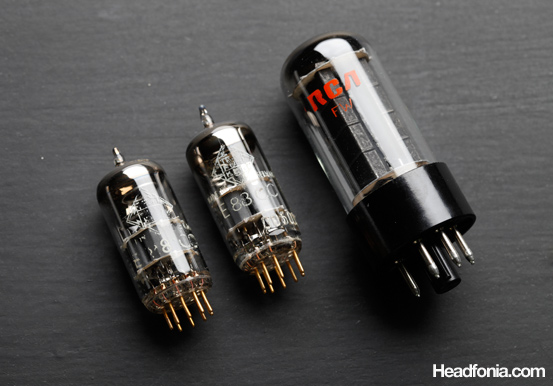
The two small ones are the Telefunken E88CC gold pin, diamond bottom driver tubes, and they are among the most sought-after E88CC tubes around. The one bigger tube is the RCA5Y3GT rectifier tube.
THE EMPIRICAL AUDIO OFFRAMP TURBO
n that visit Donny also lent me his Empirical Audio Offramp Turbo 2 USB to S/PDIF converter. This converter has been getting a lot of hype lately, and though I wasn’t so interested in it at first, I become a believer after listening to it. Combined with my Macpro, the Offramp Turbo was the first transport that really made my belt driven, top loading CEC player sounds veiled. The biggest difference was in the way the Offramp outresolve the CEC in the treble area, where the Offramp was far more open sounding without pushing the treble out to be bright or harsh a bit. I was of course testing both the CEC and the Offramp Turbo with the Ref 7.1 DAC. The Offramp Turbo, paired with the Ref 7.1, officially become the best source I’ve listened to in my reviewing journey.
As a reviewer, it’s a rare event that you get to hear a system that truly gives you a new revelation, a system that forces you to re-evaluate the good CDs in your library, but the Offramp Turbo and the Ref7.1 really do that to me. Not only does this set up sound spectacularly good, but it also manages to make good of some recordings which was awful and unlistenable before (i.e Sting live in Berlin).
END WORDS
There were some complaints about the build quality of the Ref7.1, however, and I am not even asking it to match the precise build of the Canadian-built Bryston either. For one, I received the Ref7.1 with a loose input selector switch, which gets in the way of me evaluating the other inputs. I tried to open the top panel to fix the loose input selector but found out that the screw thread had been stripped. The quality of the anodizing is not that great, in fact inferior to the finish of the Fiio E9. Not to mention the sharp edges around the corner. While the argument is that a prettier case would offset some of the cost that otherwise can be put into quality parts, what I’m asking here is just a decent step up in quality.. say match the Fiio E9’s build quality. I know, the Fiio E9 — what a big slap in the face for this $2,000 DAC.
The Bryston was in a totally different class altogether, and feels like a proper $2,000 DAC. You get individual button for each of its eight digital inputs. A button for upsampling, and a button for power. All these button has got the perfect tactile feel. LED indicator for data lock on, and the active sample rate. And while most people aren’t going to need eight different digital inputs, having them around makes you feel like you’re in Reference territory.
If you see the internal photos above, it’s also quite obvious that the soldering quality is quite sloppy on the Ref7.1, where the Bryston was really clean and more professional. It’s like opening the hood on a sports car and seeing a clean engine installation. Overall that adds up to a higher level of perceived value. So, if I was more into vocal quality, counting the Bryston’s far superior build quality, it would be an easy choice for me. Unfortunately, the Ref7.1 not only gives the better technicalities, but its sound signature also happens to be the one for me.
Sonically, however, the Audio-Gd Ref7.1 DAC is officially the new Reference DAC for me, and that should carry an even bigger weight seeing my past history with Audio-Gd products.
AVAILABILITY
It’s a bit ironic, of course, that by the time this review is published, the Ref7.1 is already a discontinued product at Audio-Gd’s website. (You can still however get the Ref5 which is also based on the PCM1704). Word has it that he discontinued the Ref7.1 due to increasing price of the PCM1704 chips. So what’s going to happen next? We can probably think that 2nd hand prices of the Ref7.1 would skyrocket, but if I were an owner, I’d be hard pressed to sell this one hell of an awesome DAC, even with its non-functional input selector knob.





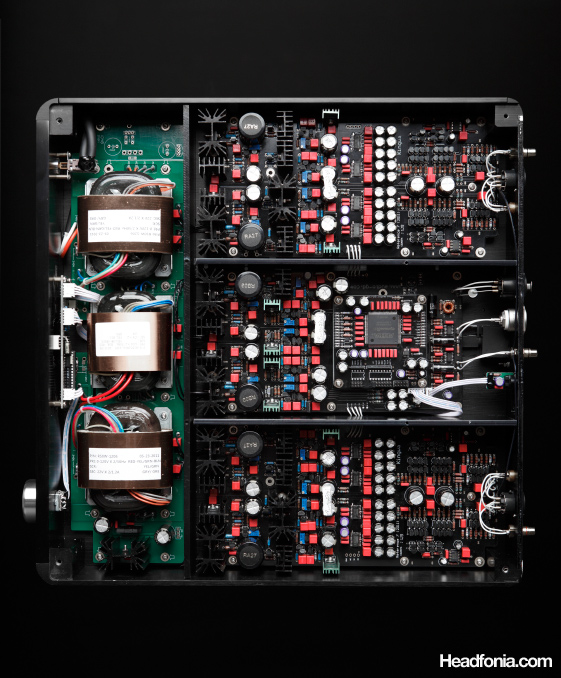
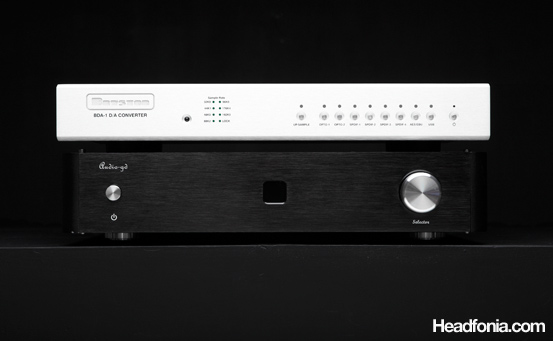
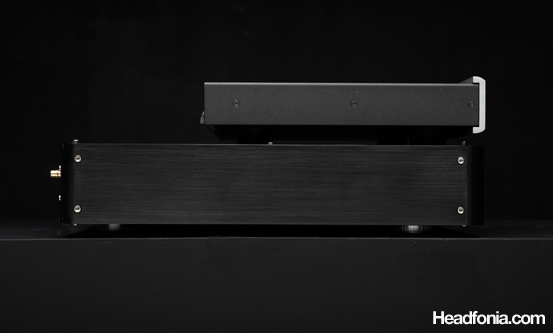
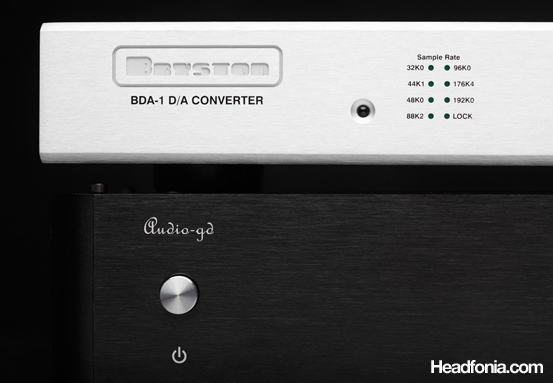
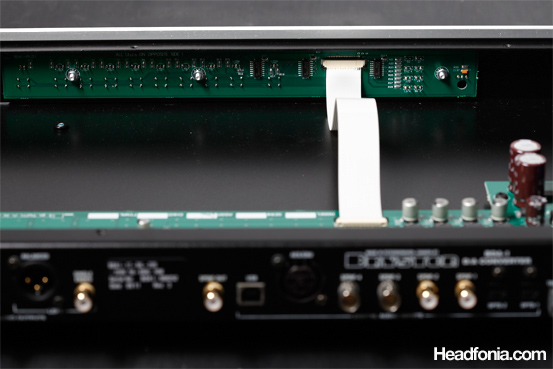
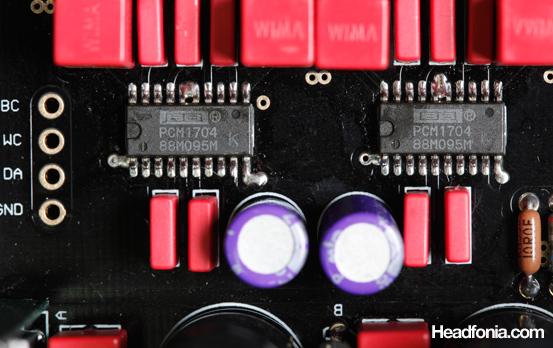
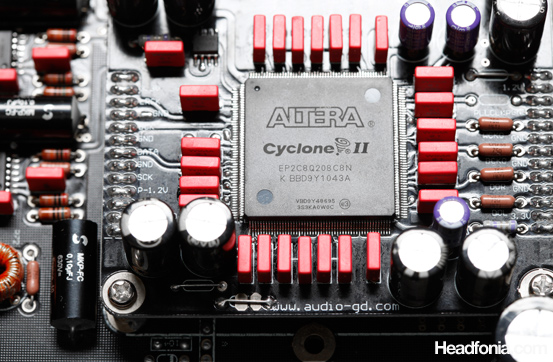
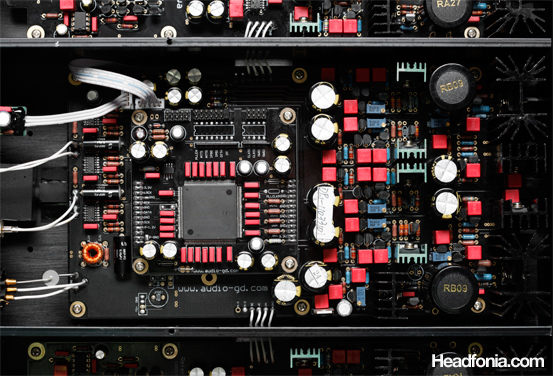
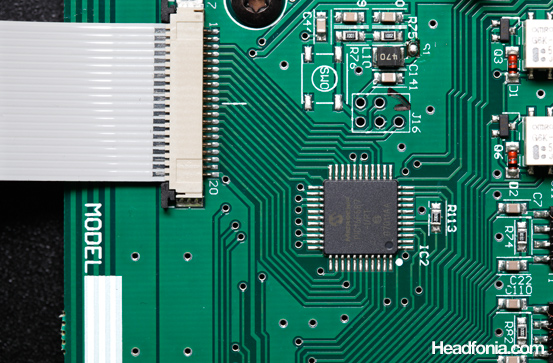
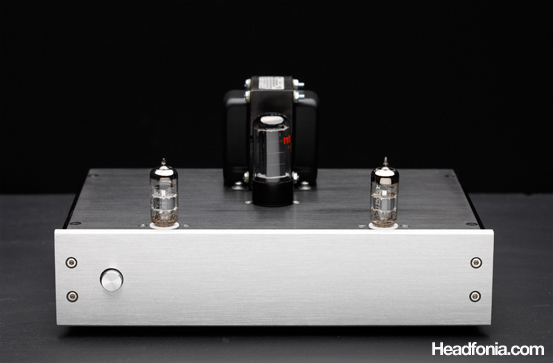
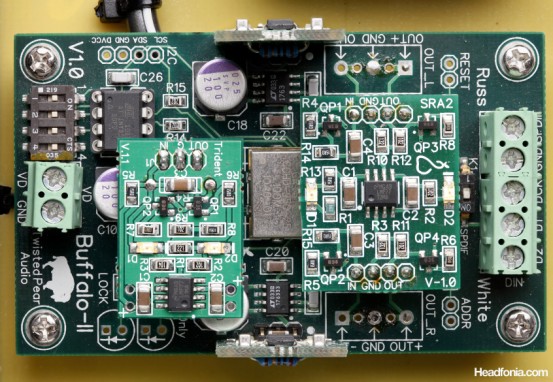
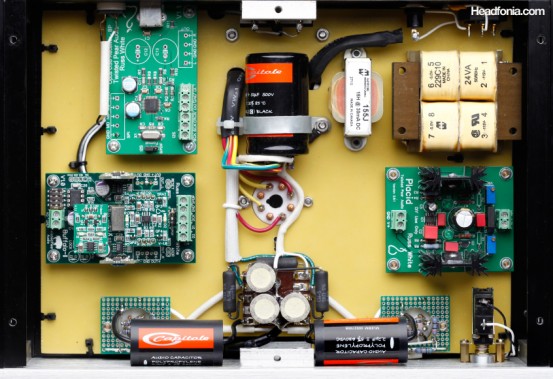
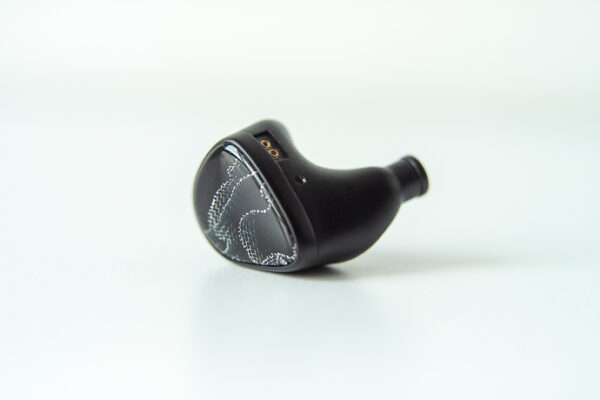
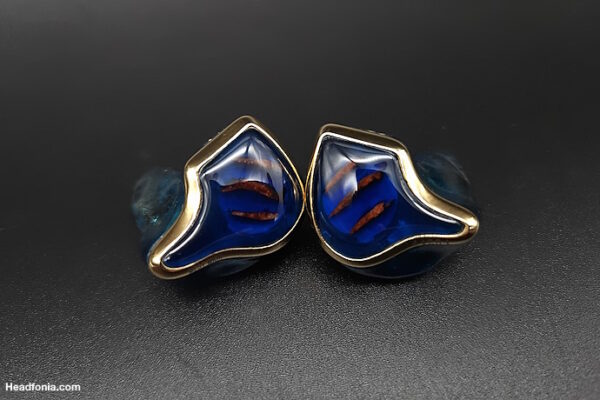
Anonymous
Apologies for not including the Buffalo 32. I will update it in a week time with comparisons with the Buffalo 32.
P. J.
Thanks for your thoughts Mike. I don’t own the ref 7 or 7.1 but I do own a Ref5 (which is also no longer available for purchase from AGD) and am familiar with its sound signature. Honestly I’m not a big fan of the PCM-1704UK chips, I’m more of the Wolfson fan (8740 DacMagic, 8741 Opus) which gives me more overall fun with its warmer and more musical signature. I find Ref5 too dark and dry as you put it but at the same time I recognize its qualities, especially quality and tightness of the bass and details that just pop out.
External build quality is not that important to the maker of this DAC and that’s a good thing or I wouldn’t be able to afford it. I disagree about soldering being sloppy. If you read the “About Audio GD” on their site is states that “All our products are hand-crafted by Hi-Fi fans. Our Priority is Quality, followed by efficiency.”I’m pretty sure soldering at Bryston is automated.One import quality of this DAC is also that is not bright which is often the problem with a lot of DACs nowadays.
Also to note is that Ref7.1 has upgradeable DSP which should improve performance further.
Audio GD also offers modification such as using different internal wiring, adding different inputs and also changing the colour of the knows and chassis. A big + if you want another BNC input instead of the average USB.
I hope I wasn’t too critical Mike, you review totally reflects my impressions on the sound signature and the photos again were top notch.
kindest regards, Peter
Anonymous
Hi PJ,
The Wolfson is less dark, that’s true. But when take a longer listen you’ll notice that the Wolfsons are not as good in the soundstage department. The sound signature is nice and smooth though, and for non live recordings soundstage performance may not matter as much.
Thanks for your comments, Peter. I think you got a solid point, but we’re just looking at it from two different angles.
Cex
Nice review mike, very easy for me to get what u meant
Anonymous
Thanks man.
alexandrov
As far as I know i’s discontonued model – Audio-GD don’t have the proper grade of PCM1704 and don’t want to make their DACs with another grade.
Anonymous
Yes, that’s true. I believe it’s a discontinued model (though some also says that if you email him directly he would still build one for you).
Dave
Nice to finally see a review on Audio-GD gear Mike. Any plan getting hands on their Phoenix amp?I heard a lot of things about them being a killer combo.
..And in your opinion,how does the PCM1704 compare to the newer Sabre32 chip? The latter was quite popular lately
Anonymous
Thanks, Dave.. no plans for the Phoenix for now as I’m still busy finishing up some amplifier reviews — and I’m also waiting to get the Arete and the Butte from TTVJ. The Butte is Apex’s lowest priced amp ($495) and I’d really like to see how it performs.
As for the Sabre32 chip, I am updating this article with a comparison to the Buffalo32 and so you can check it out early next week perhaps.
Kelvin Ang
Very interesting review, Mike! I’ll definitely be looking forward to the comparison against the ESS DACs. Word has it that Sabres tend to be on the bright side of things, which *should* provide a very interesting contrast to the PCM1704-based gear.
It would nice to have Kingwa take a look at your review too, I’d think. I’ll bet he would have some interesting comments about your opinion on his Compass. 🙂
Anonymous
Hi Kelvin,
I have updated the impression with the Buffalo 32 DAC. You’re right — the ESS Sabres tend to be brighter, and also dryer. With the basic IVY II analog stage from Twisted Pear, I actually still prefer the WM8741 based Opus to the Buffalo 32.
PS: He’s probably not going to be too happy about my Compass impressions.
Brian Fu
I’m sure you understand now why I went into a different direction for my DAC quest. ;-D
Kelvin Ang
Just read the updated section. Very interesting stuff you’ve got there. If you still happen to have the valve Buffalo DAC with you, it would be nice to have some pictures of its innards too (in particular, the valve analogue stage you were talking about).
(Re: PS) You might be pleasantly surprised, I might think. I believe I came across an exchange somewhere about him basically kicking up bit of a fuss about even how his newer toys (like the NFB-5 — essentially the FUN’s 2011/12 replacement) are not perfect. Largely due to the analogue section, I assume. He wasn’t too pleased about how poorly an opamp-based circuit architecture performs in contrast with a non-feedback one.
Anonymous
Sure, Kelvin I will update the article with a picture of the Buffalo, and more on the actual schematics of the analog section too.
Brian Fu
Whoa, haven’t been here for a long time. Nice review. Thing looks really huge man, I’m not sure it would fit on my desk.
Anonymous
DACport is nice man.
Shahrose
Completely agree about the Buffalo DAC + Tube output stage. That’s why I replaced a balanced Buffalo32 with the Modded Minimax DAC.
I do have to say I disagree on the soundstage and air descriptions of the B32. Mine was excellent in these regards. It was definitely dry though, and that’s the main reason I sold mine. (Note: I hated the USB input of the B32, like I have with all my other DACs. My impressions are therefore, only with standalone transports).
Kelvin Ang
Now I wonder if you had thrown away your B32 a little too early, though. Cos this looks like a really interesting piece of kit!
http://www.exadevices.com/exaU2I/Specifications.aspx
Shahrose
Hi Kelvin. That would have been nice when I had it. (I was looking for something similar actually). Still, I don’t think it would change my impressions because I tried about 7 different transports (and settled on a high-end one) but the sound always was a bit dry. I think the DAC’s IVY output stage was to blame to be honest.
Anyways, I replaced the B32 with another Sabre DAC in the modified Minimax, with a tube (and toggleable SS output). Very happy with the decision.
Anonymous
Nice. Seems you’re ahead of the DAC game then.
Anonymous
Updated with pictures of the Buffalo internal. Still waiting for email of the schematics of the Buffalo.
Sam
Is the Bryston BDA-1 much better than the Ayre QB-9?
Anonymous
Hi Sam,
I’ve never listened to the Ayre, so I can’t say.
HC
Hi Mike,
May i know how does the Ref 7.1 compare to the Lavry Da11?
Anonymous
Hi HC,
The Lavry DA11 is a monitoring DAC and the character is more uncolored, more straightforward, dryer, less warm, less bottom end body (the Lavry is more linear, but PCM1704 based DAC tend to be heavy on the bottom).
As for technicalities comparison, I think the Lavry is very good, but the Ref7.1 still has an edge over the Lavry.
Daniel
Hi Mike,
You said the Audio-GD Ref 7.1 was a super charged and turbo version of the HM-801. I’m thinking about getting this because I love the HM-801’s sound. Can you do a brief comparison of the 7.1 and HM-801? Thanks.
Anonymous
Comparison?
Well, it’s practically the same sound, but wider and deeper soundstage, better articulation, clearer instruments, better ambiance, yada yada yada.. you get the idea. 😉
Gary
Hi Mike,
After reading your thoughts on the Ref 7.1 I have two questions came to my mind.
1. How big was the difference between balanced and unbalanced on the Ref 7.1?
2. Currently I have the Audio GD ROC amp pair up with the HRT MS2+, but I feels that on my HD650 (balanced) the clarity still a bit of lacking. Would the Ref 7.1 a good upgrade from the HRT MS2+ in term of clarity?
Anonymous
Hi Gary,
1. I didn’t test the balanced out on the Ref 7.1, but previous tests between balanced and unbalanced outputs reveals that balanced output would have a weightier lows and a wider soundstage. And also twice the signal amplitude.
2. I don’t know where the lack of clarity comes from. It may be due to the nature of the HD650’s sound that gives you that impression, or/and it may be the Audio-Gd ROC and/or the HRT MS2+. It’ll be best if you can try another headphone first to make sure that the perceived lack of clarity is not because of the HD650 which some people feel as being veiled.
Gary
My first thought was USB is probably lacking of power vs. the coaxial output on the Ref 7.1. My assumption could be wrong, but that is my first assumption why I think the clarity is lacking.
Anonymous
Honestly in my experience reviewing DACs, while there are some differences between Coax and USB (USB normally is brighter), the difference is not that significant and I think it’s more of an issue in the headphone you use.
LarsHP
Well – Ref 7.1 WAS out of stock, but it has been available since november 2011 and still is to this day 🙂
fox
Hi Mike, Can you upload the schematics of Buffalo 32 with Tube analog section?
Mike
Sorry I don’t have it as I wasn’t the one who built the tube section.